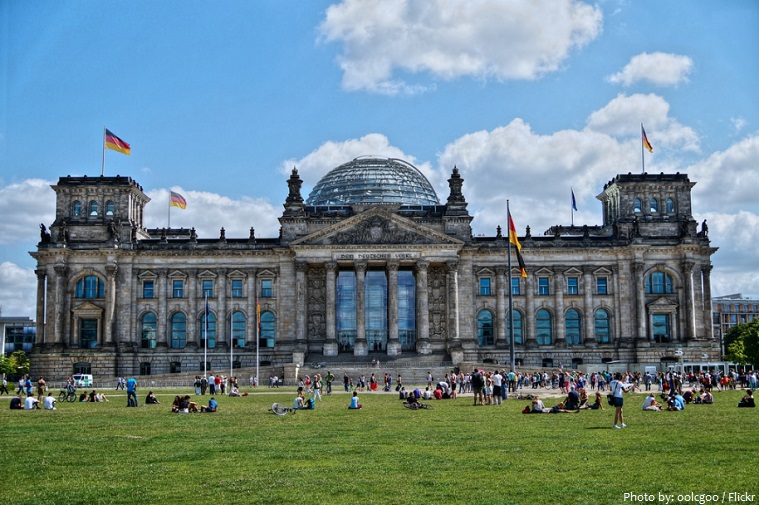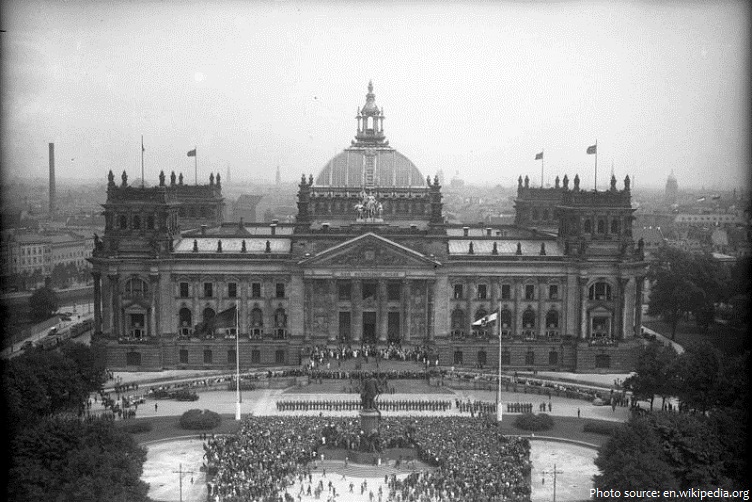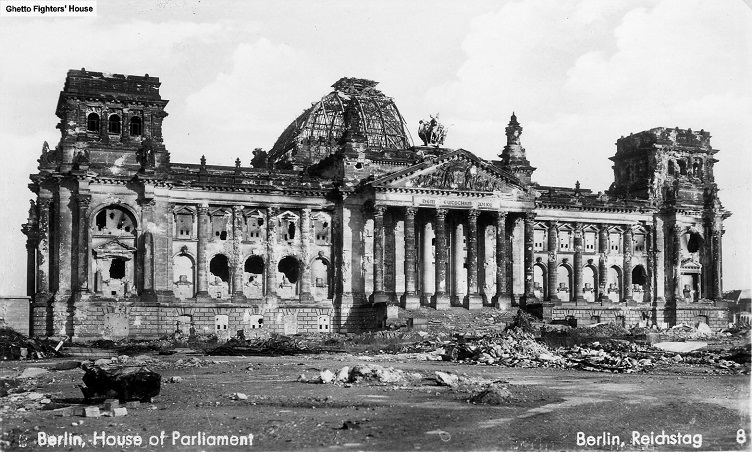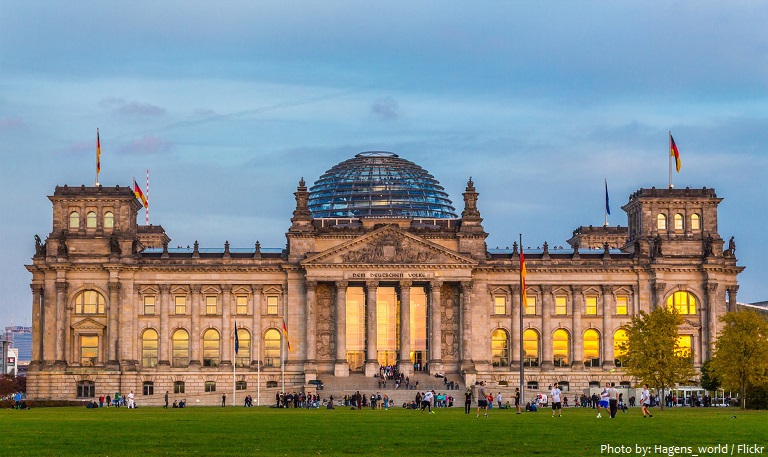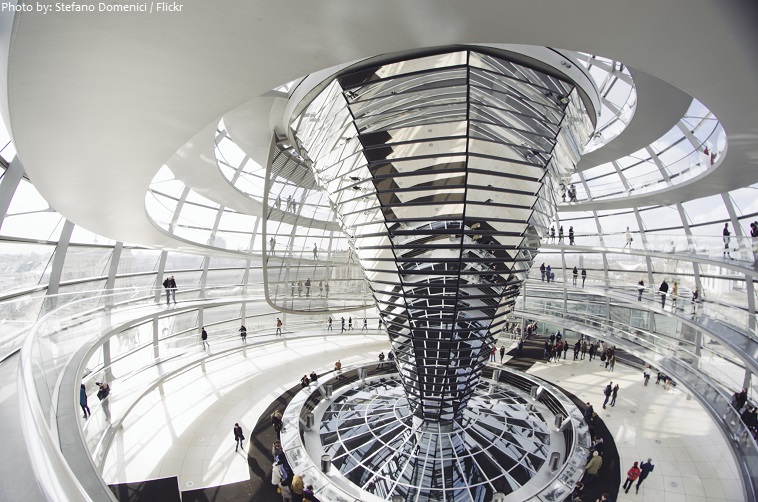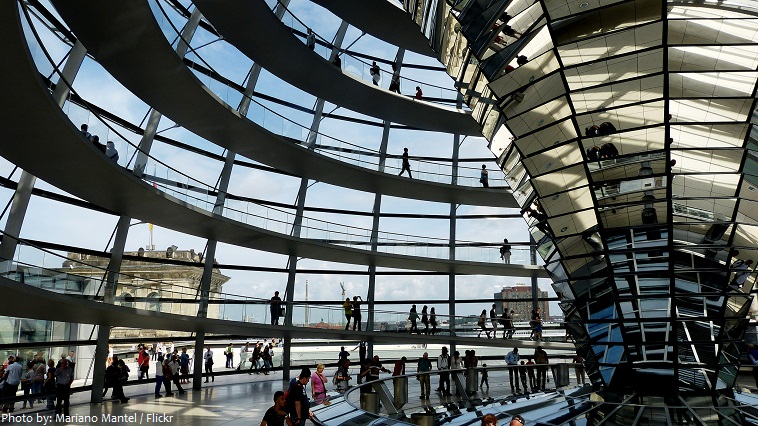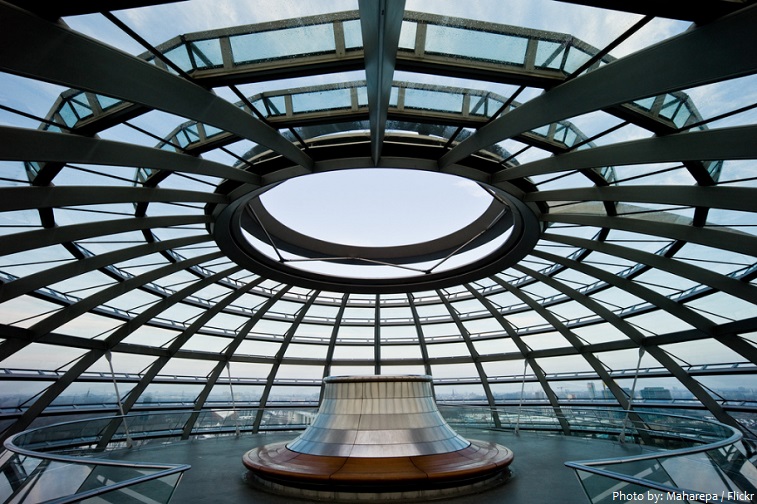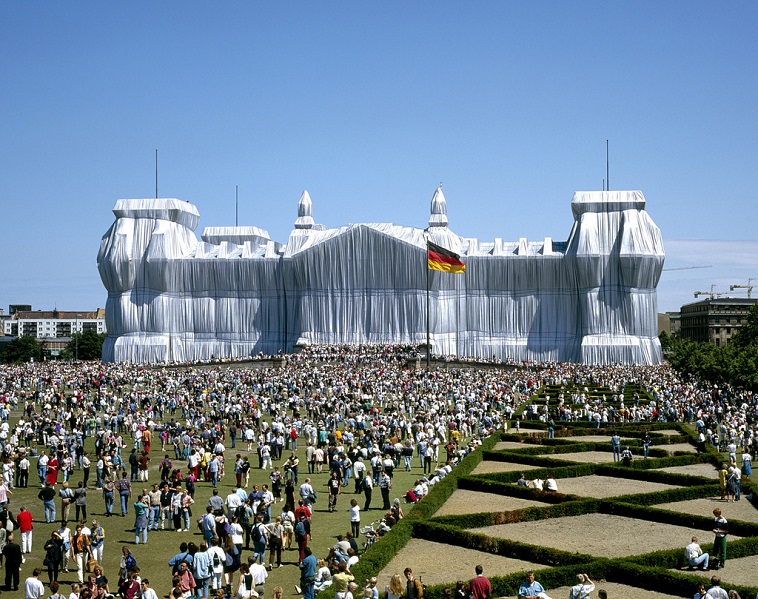The Reichstag building is one of the most famous landmarks in Berlin, Germany.
The building is located in the historic center of Berlin near the Brandenburg Gate, Potsdamer Platz and Tiergarten.
It was constructed to house the Reichstag (“Imperial Diet”) of the German Empire.
The building was designed by German architect Paul Wallot.
Construction took place between 1892 and 1894, and included a cupola of steel and glass that was heralded as a major engineering accomplishment, while the building as a whole drew criticism for its mixture of architectural styles.
It was opened in 1894 and housed the Diet until 1933, when it was severely damaged after being set on fire.
The building caught fire on 27 February 1933 in what was reported to be an arson attack by a Dutch communist, although many believe that it was orchestrated by the Nazis as a ‘false flag operation’, to enable Adolf Hitler to step up his state security operations and crack down on civil liberties.
During the 12 years of Nazi rule, the Reichstag building was not used for parliamentary sessions.
During the Second World War, the Reichstag was badly damaged and it then fell into disuse.
When the Cold War emerged, the building was physically within West Berlin, but only a few meters from the border of East Berlin, which ran around the back of the building and in 1961 was closed by the Berlin Wall.
A partial refurbishment took place in the 1960s, but it was only after German reunification in 1990 that a full-scale reconstruction was proposed and eventually got underway, led by the British architect Norman Foster. After its completion in 1999, it once again became the meeting place of the German parliament: the modern Bundestag.
Known for sleek, modern designs of steel and glass, Foster’s design focused on making the processes of
government more transparent for the German people with an innovative architectural Dome design that can be described as a sculpture of light.
Upon entering the dome one has the impression of being in a winter garden, whose effects of light and
transparency are exacerbated by the inverted cone that lies at its center and is completely covered by 360 mirrors inclined.
A mirrored cone in the center of the dome directs sunlight into the building, and so that visitors can see the working of the chamber. At night, however, there is a reverse process – thanks to the mirrors, the artificial light of the chamber is reflected externally, illuminating the dome.
The dome is open to the public and can be reached by climbing two steel, spiraling ramps that are
reminiscent of a double-helix. The Dome symbolizes that the people are above the government, as was not the case during National Socialism.
The top of the glass dome includes an open-air viewing platform with an impressive 360-degree
panoramic view of the surrounding Berlin cityscape.
The dome also plays an important role in the ventilation system, as it draws hot air upward, while the fans recycle energy from the waste air. The dome is therefore not only a distinctive element of the architectural composition, but also an important device of power and lighting.
The design of the dome was at first controversial, but has become accepted as one of Berlin’s most
important landmarks.
In the 21st century the Reichstag became a symbol of Germany’s commitment to renewable energy. The Reichstag’s iconic dome has a massive solar array on its roof further increased the building’s energy independence. Biofuel generators provided for a significant amount of the Reichstag’s power needs, and in 2008 the Bundestag approved a plan to power the building with 100 percent renewable resources.
The building became the focus of the art world in June 1995 when it was wrapped in 100,000 square meters (1,076,390 square feet) of silver fabric by the environmental sculptors Christo and Jeanne-Claude. More than five million people viewed the installation, which was regarded as one of Christo and Jeanne-Claude’s most ambitious projects. The Reichstag remained wrapped for 14 days and all materials were recycled.
Pop singer Michael Jackson performed in front of 50,000 people during his Bad World Tour on 19 June 1988.
On 2 May 1945, Yevgeny Khaldei took the photo Raising a flag over the Reichstag, which symbolized the victory of the USSR over Germany.
Today, visitors to the building can still see Soviet graffiti on smoky walls inside as well as on part
of the roof, which was preserved during the reconstructions after reunification.
The Reichstag building attracts about 3 million people per year. It is the second most visited landmark in Germany (after Cologne Cathedral).
